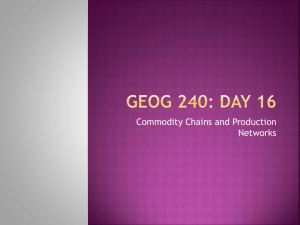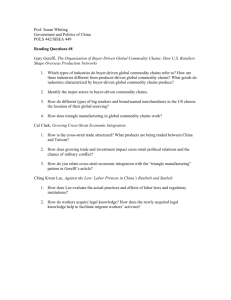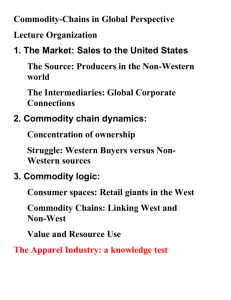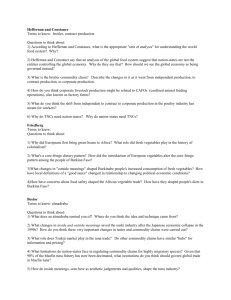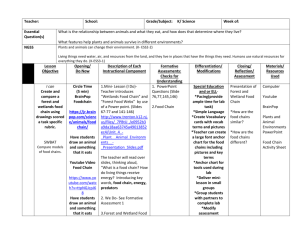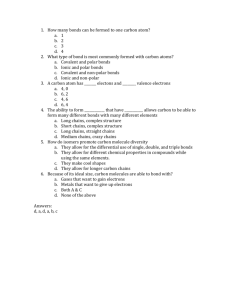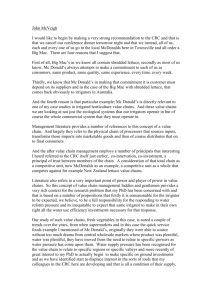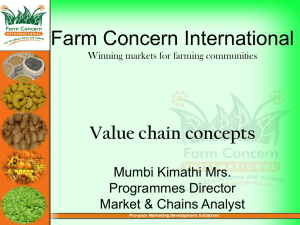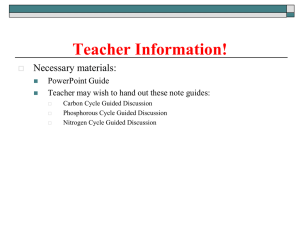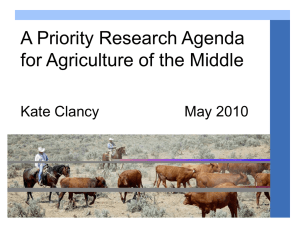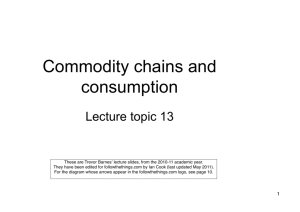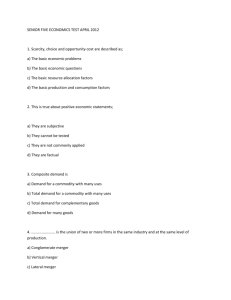commodity chains - Pacific Collegiate School
advertisement
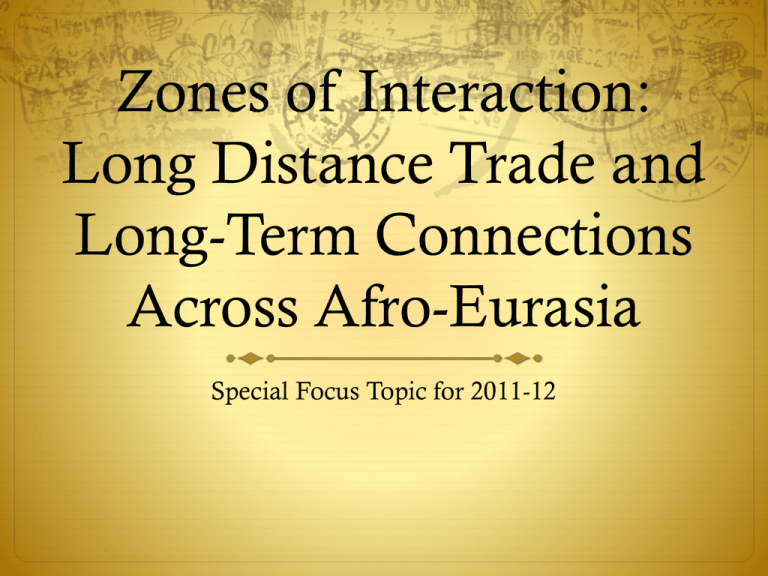
Zones of Interaction: Long Distance Trade and Long-Term Connections Across Afro-Eurasia Special Focus Topic for 2011-12 Key Concepts Relating to “Interaction” in AP World “The Neolithic Revolution” (best example: spread of cereals) “The Development and Interactions of Early Agricultural Societies” (best example: bronze) “Emergence of Transregional Networks of Communication and Exchange” (best example: silk road) “Expansion and Intensification of Transregional Networks of Communication and Exchange” ( “Continuity and Innovation of State Forms” “Globalizing Networks of Communication and Exchange” River Valley Period Civilization Leaves the River Valleys Classical Era Post Classical Era Post Classical Era Age of Exploration Trade and Culture Trade and Disease Trade and Governance Trade and Ecology Commodity Chains A “commodity chain” is a path that connects consumers with the origins of the products they purchase or use. A commodity chain includes things like: initial gathering of natural resources and the impact of this gathering on local ecologies Transportation of resources to site of manufacturing or processing manufacturing or processing site Transportation to retail or end use Consumption of product Simple Commodity Chain I go to the garden bed in my front yard, pick a tomato, and eat it. Or is it that simple? Where do the seeds come from? Where do tomatoes come from? How did they get to California? Were the tomatoes fertilized? Was the soil amended? Chains Linear chains: 16th century silver went from the Andes to the Philippines to Spain; cotton from Egyptian fields to British factories Web-like chains: ipods; automobiles; soda Note: modern chains tend to be more web-like Famous commodity chains throughout history? Silk Road
